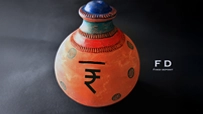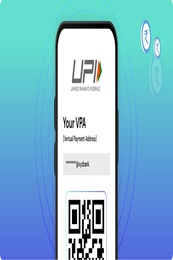NACH (National Automated Clearing House): Features and How it Works
July 05, 2025

Efficient, secure, and seamless payment systems are the backbone of a modern economy. India’s National Automated Clearing House (NACH), implemented by the National Payments Corporation of India (NPCI), has emerged as a critical innovation in streamlining high-volume, repetitive electronic transactions.
According to the NPCI, as of 2024, over 90% of core banking-enabled branches in India utilise NACH for transactions, highlighting its expansive adoption. The system processes millions of transactions daily, powering government schemes, corporate payments, and individual transactions with unmatched speed and precision. Let’s dive into what makes NACH the cornerstone of India’s payment infrastructure.
What is NACH?
NACH stands for National Automated Clearing House. It is a centralised web-based platform developed by NPCI to facilitate interbank electronic transactions. It consolidates and standardizes multiple Electronic Clearing Service (ECS) systems across India, eliminating local barriers and ensuring uniform practices. NACH is designed to support high-volume, periodic transactions, whether for disbursing salaries, pensions, or subsidies or collecting payments for utilities, loans, and insurance premiums.
Types of NACH
1. NACH Credit
This type is used for making bulk payments such as salary disbursement, pension pay-outs, and dividend distributions. Corporates and governments widely use NACH Credit to send money directly to beneficiaries’ accounts in a secure and efficient manner.
2. NACH Debit
NACH Debit is designed for bulk collections, such as utility bill payments, loan EMIs, and insurance premiums. With prior authorization (mandates) from customers, organizations can seamlessly collect payments on predefined dates.
Benefits of NACH
NACH has played in exemplary role in simplifying bulk transactions for banks, customers and organisations.
1. Advantages for Banks
- Banks can significantly enhance customer experience by offering quicker payment services and strengthening their partnerships with affiliated entities.
- It simplifies and accelerates the collection process for EMIs, loans, insurance premiums, and other recurring payments, reducing dependency on conventional checks or paperwork.
- Automated workflows minimise manual intervention, reducing errors and inefficiencies.
- Transactions are processed much faster, offering near-instantaneous completion compared to earlier systems.
2. Advantages for Large Organizations
- Big businesses no longer need to depend on cheques for payment processing.
- Payment deadlines are automatically managed, eliminating manual tracking of due dates.
- Routine payments, such as salaries, pensions, and dividends, are executed promptly, ensuring operational efficiency.
- Bulk transactions, including allowances and scholarships, are processed more swiftly.
- Organisations can offer improved service to customers by enabling quicker bill payments and streamlined processes.
3. Advantages for Customers
- Customers are freed from the need for manual intervention in routine financial transactions.
- The entire payment process becomes more streamlined, efficient, and hassle-free.
- Payments for utilities, loans, and subscriptions, such as electricity, phone, and credit card bills, are managed automatically, removing the burden of remembering due dates. Key
Features of NACH
1. Centralised and Standardized System
NACH creates a consistent framework for electronic transactions across India, removing regional discrepancies and standardizing operations.
2. High-Volume Processing
It efficiently manages large-scale transactions, making it ideal for governments, corporates, and financial institutions for payment collections and disbursements.
3. Advanced Security Features
With top-tier encryption, multi-layered validation, and secure processing, NACH ensures transaction safety and reliability.
4. Aadhaar Payment Bridge (APB)
The APB links government agencies and banks to enable Aadhaar-based direct benefit transfers, streamlining subsidy and benefit distribution.
5. Mandate Management System (MMS)
The refined MMS feature supports seamless handling of mandates for recurring payments such as EMIs or investment contributions.
6. Dispute Management System (DMS)
NACH’s online DMS facilitates efficient dispute resolution, enhancing user confidence.
Applications of NACH
- Government Transactions: Seamlessly distribute subsidies, pensions, and other DBT payments.
- Corporate Payments: Simplify salary pay-outs, dividend distributions, and interest disbursements.
- Utility Payments: Enable efficient bulk payment collections for essential services.
- Financial Transactions: Streamline collections for EMIs, insurance premiums, and investments.
What is NACH’s Aadhaar Payment Bridge (APB) System?
The Aadhaar Payment Bridge (APB) System is an integral feature of NACH developed by NPCI. It plays a crucial role in enabling the Direct Benefit Transfer (DBT) scheme. This system uses the Aadhaar numbers of beneficiaries to ensure government subsidies and benefits are transferred directly to their bank accounts. APB connects government departments and their sponsor banks on one end, while linking beneficiary banks and recipients on the other, ensuring seamless and efficient distribution of funds.
What is NACH e-Mandate Service?
The NACH e-Mandate service, introduced by NPCI, is designed to streamline and automate recurring payments. It reduces processing time and eliminates the need for manual intervention. This service allows authorized corporations and organizations to make bulk payments directly to recipients’ bank accounts for purposes like salaries, dividends, pensions, and subsidies. With e-Mandates, recurring payments can be easily authorized using net banking or debit card details, making the process faster and more efficient.
What is the Difference Between ECS and NACH?
| Parameters | ECS | NACH |
| Full Form | Electronic Clearing Service | National Automated Clearing House |
| Coverage | Limited to regional or local clearing houses | Nationwide coverage with centralised system |
| Processing Speed | Comparatively slower | Comparatively faster due to automation and STP (Straight Through Processing) |
| Security | Basic security measures | Advanced encryption and multi-level data validation |
| Mandate Management | Manual, paper-based mandates | Automated e-mandates for quicker set-up |
Final Thoughts
The National Automated Clearing House (NACH) stands as a testament to India’s progress in building a robust and inclusive financial ecosystem. Its ability to handle high-volume transactions securely and efficiently has revolutionized the way payments are processed, benefiting individuals, corporates, and government entities alike. As digital payment adoption continues to grow, NACH will remain at the forefront of India’s financial transformation.
Enjoy easy banking with Ujjivan Small Finance Bank. Save more with our high-interest Savings Account and Deposit products. Need cash for your business or personal needs? Apply for MSME Loans or Micro Loans with us – we offer competitive rates and quick disbursal. We also offer vehicle loans and home loans tailored for your unique requirements. Experience a smooth banking journey with Ujjivan SFB!
Disclaimer:
The contents herein are only for informational purposes and generic in nature. The content does not amount to an offer, invitation or solicitation of any kind to buy or sell, and are not intended to create any legal rights or obligations. This information is subject to updation, completion, amendment and verification without notice. The contents herein are also subject to other product-specific terms and conditions, as well as any applicable third-party terms and conditions, for which Ujjivan Small Finance Bank assumes no responsibility or liability.
Nothing contained herein is intended to constitute financial, investment, legal, tax, or any other professional advice or opinion. Please obtain professional advice before making investment or any other decisions. Any investment decisions that may be made by the you shall be at your own sole discretion, independent analysis and evaluation of the risks involved. The use of any information set out in this document is entirely at the user’s own risk. Ujjivan Small Finance Bank Limited makes no representation or warranty, express or implied, as to the accuracy and completeness for any information herein. The Bank disclaims any and all liability for any loss or damage (direct, indirect, consequential, or otherwise) incurred by you due to use of or due to investment, product application decisions made by you on the basis of the contents herein. While the information is prepared in good faith from sources deemed reliable (including public sources), the Bank disclaims any liability with respect to accuracy of information or any error or omission or any loss or damage incurred by anyone in reliance on the contents herein, in any manner whatsoever.
To know more about Ujjivan Small Finance Bank Products Visit:"https://www.ujjivansfb.in"
All intellectual property rights, including copyrights, trademarks, and other proprietary rights, pertaining to the content and materials displayed herein, belong
to Ujjivan Small Finance Bank Limited or its licensors. Unauthorised use or misuse of any intellectual property, or other content displayed herein is strictly prohibited and the same is not intended for distribution to, or use by, any person in any jurisdiction where such distribution or use would (by reason of that person’s nationality, residence or otherwise) be contrary to law or registration or would subject Ujjivan Small Finance Bank Limited or its affiliates to any licensing or registration requirements.
FAQs
1. What is the full form of NACH?
NACH stands for National Automated Clearing House.
2. Who developed the NACH system?
It was implemented by the National Payments Corporation of India (NPCI).
3. What are the primary uses of NACH?
NACH is used for high-volume, repetitive transactions such as salary disbursements, subsidy payments, utility bill collections, and loan EMI payments.
4. What is the Aadhaar Payment Bridge (APB) System?
APB is a feature of NACH that links government agencies and banks to facilitate direct benefit transfers using Aadhaar numbers.
5. How does NACH support financial inclusion?
By enabling Aadhaar-based transactions, NACH ensures banking services reach underserved and rural areas.
6. What is a Mandate Management System (MMS)?
MMS allows participants to manage mandates for recurring payments like loan EMIs or subscriptions efficiently.
7. Is NACH available across all bank branches?
Yes, it covers all core banking-enabled branches nationwide.
8. What is the difference between ECS and NACH?
NACH is an advanced, centralized version of ECS, offering enhanced efficiency, security, and nationwide standardization.
9. Can individuals use NACH for personal transactions?
NACH is primarily designed for bulk transactions by institutions but benefits individuals indirectly through services like salary credit and bill payments.
10. Is NACH secure?
Yes, NACH employs advanced security protocols, including encryption and multi-level data validation, to ensure transaction safety.
Latest Blogs

How Jewellers in India Calculate Gold Price
June 26, 2025
Gold jewellery holds a special place in Indian culture, often bought during festivals and family celebrations.

How to Link Your Mobile Number with Aadhaar Online & Offline Methods)
June 25, 2025
Linking your mobile number with Aadhaar is essential if you want to access Aadhaar-based services like e-KYC and Video KYC for bank accounts, OTP verification, filing taxes, e-Aadhaar downloads, and biometric authentication. Without a registered mobile number, you can't use any online Aadhaar services.

The Importance of Property Insurance When Taking a Home Loan
June 25, 2025
A home loan is a long-term financial commitment often spanning between 10 to 20 years, or even more.

Fixed Deposits vs Sovereign Gold Bonds (SGB): Which Is the Better Investment?
June 24, 2025
In today’s uncertain economic climate, conservative and low-risk investment options continue to dominate the choices of Indian savers.

FD vs SIP: Not a Race, But a Financial Match
June 24, 2025
We often treat money like a race — chasing returns, tracking trends, comparing who’s earning more from what.





